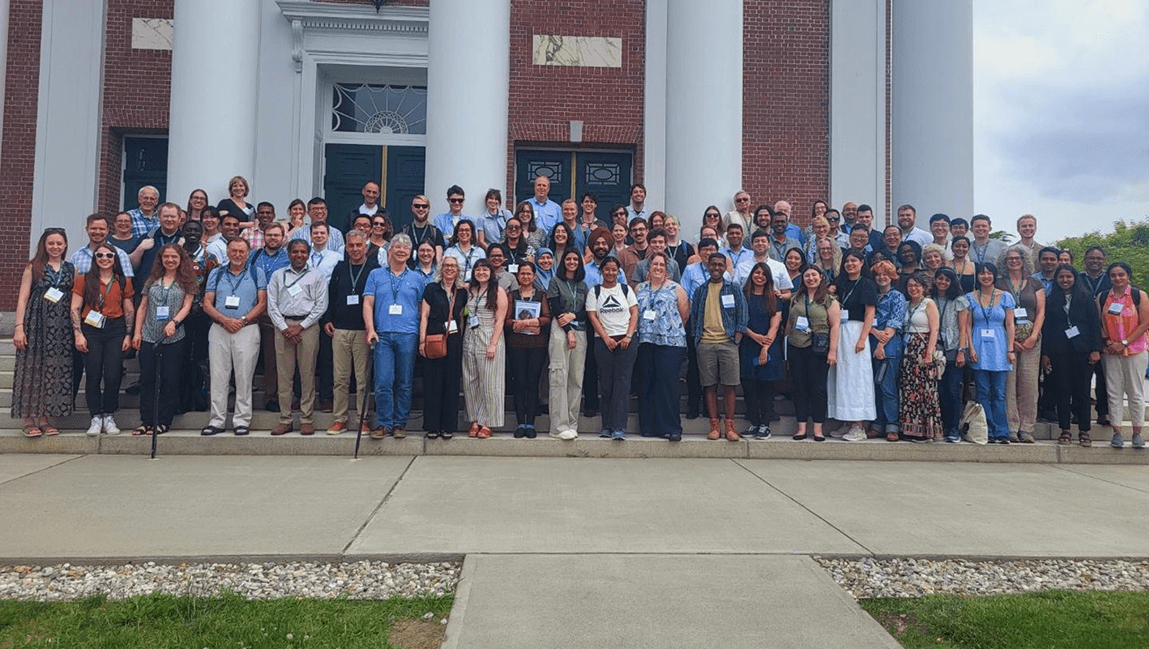The North American Nitrogen Fixation Conference began in 1968 and has been meeting regularly since then. This is the first time it was held in Vermont. The conference has a broad focus that includes research on symbiotic nitrogen-fixation, a central part of sustainable agriculture which has been used effectively to improve crop production since ancient times. This is a very broad conference with people whose expertise vary across disciplines ranging from microbiology, molecular genetics, plant physiology, and biochemistry to ecology, evolution, and agriculture with a strong focus on microbiomes. Since its inception, the NASNFC has been a significant vehicle by which these various disciplines have exchanged current information regarding nitrogen fixation research in North America. The subject matter at the conference was also diverse, ranging from basic to applied aspects of nitrogen fixation research.
Why study Nitrogen fixation?
Nitrogen is one of the most important molecules for life – every living thing needs it to make the major building blocks of life: proteins, DNA, RNA, etc. It’s also found in hormones and signal molecules as well as in compounds like nicotine and caffeine (each caffeine molecule has 4 nitrogens! Think of that when you drink a cup of coffee!).
All life is based on nitrogen and nitrogen is notoriously inaccessible. Yes, it’s present in fertilizer and compost, but most of the air is nitrogen and it’s completely inaccessible to all living organisms but a few kinds of bacteria. The amazing thing is that 78% of the air is nitrogen and we breathe it in and out every day, completely unchanged. Some bacteria, however, can break apart the dinitrogen in the air, “fixing” it, as they turn it into ammonia, which can be used directly in the process to make amino acids, which is the starting point for all nitrogen-containing compounds.
Industrial nitrogen fixation requires high temperatures, like 750o F, and 200 times higher pressure than the pressure we find outside, consuming high amounts of fossil fuels. Those special nitrogen-fixing bacteria, however, can do this at room temperature and pressure!
Over millions of years, some plants have developed very close associations with nitrogen-fixing bacteria. Plants such as legumes (chickpeas, beans, peas, soybean, alfalfa) take up these bacteria, and house them inside root cells, giving them an internal source of fertilizer. In return, the plants feed these symbiotic microbes carbon and important nutrients like iron. The value of these nitrogen-fixing associations has been known in agriculture for a long time. Three sisters farming uses bean plants grown with maize and squash, providing a source of nitrogen to the neighboring plants. People around the globe have grown legumes as an important part of agriculture, using them to revitalize soils, as we still do now! As we turn more to sustainable agricultural approaches, we are looking to identify conditions that will promote this nitrogen-fixing symbiosis.
Why are people coming together to discuss Symbiotic Nitrogen fixation?
This is a very complex interaction – it involves plants and bacteria, which grow together underground, in the soil. The genetics of each partner plays an important role as does the environment – an agricultural field, a meadow, an arid landscape.
This meeting is unique because it brings together scientists from different areas: geneticists, ecologists, evolutionary biologists, biochemists, microbiologists, plant biologists and computer modelers. Each approach the problem from a different direction, and the ideas that come out of this melting pot of findings and research approaches, help to develop new collaborations, take a fresh look at research projects, and provide both faculty and students a broad foundation from which to build their own projects. The science at the conference ranges from basic to applied, and several people from industry also attend. The conference is chance for scientists in these areas to catch up with colleagues and is also a welcome time to think about and develop new ideas, projects and collaborations.
Students, both undergrads and grad students had lots of opportunities to network and report that they came back from the conference excited and ready to dive into their projects with new enthusiasm.
The participants had time to tour UVM and Burlington, enjoying the beautiful June weather. People walked or biked along the bike path along Lake Champlain in their spare time, and one afternoon, 55 people joined Jeanne Harris, Chair of the UVM Department of Plant Biology for a tour of our Proctor Maple Research Center – learning about the science behind maple sap collection and maple syrup production, which is such an important part of Vermont.
This year’s conference was sponsored by UVM's College of Agriculture and Life Sciences, UVM's Office of the Vice President for Research, and Terramaxag.com
